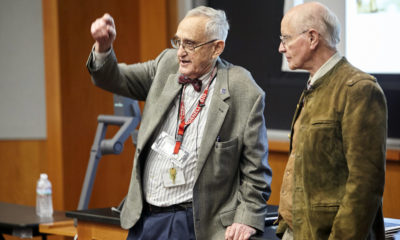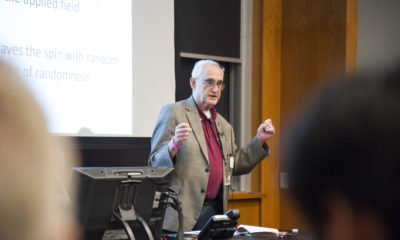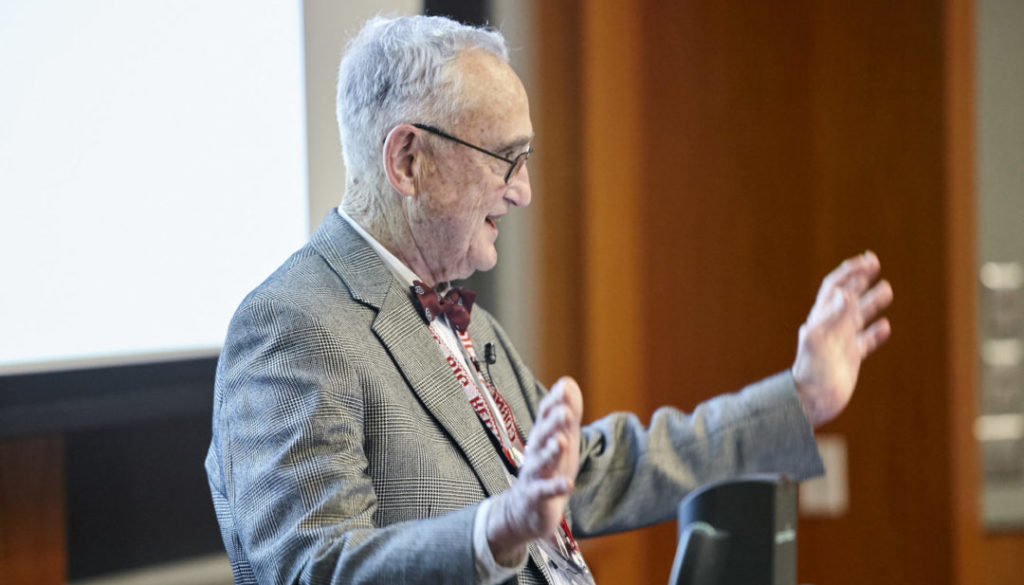Texas A&M to Host Two-Day Symposium to Honor Nobel Laureate and 2019 Physicist of the Year David Lee
Texas A&M University System Chancellor John Sharp and Texas A&M University President Michael K. Young will join the Institute for Quantum Science and Engineering (IQSE) this week for a two-day symposium to celebrate Texas A&M Distinguished Professor of Physics and Astronomy and 1996 Nobel Prize winner David M. Lee, recently featured as The Top 100 Registry’s 2019 Physicist of the Year.

Dr. David M. Lee 
Lee and fellow Texas A&M physicist Marlan O. Scully (right) at a 2017 Hagler Institute for Advanced Study Symposium. (Credit: Hagler Institute for Advanced Study.) 
Lee, presenting at the 2017 Texas A&M Physics and Engineering Festival.



